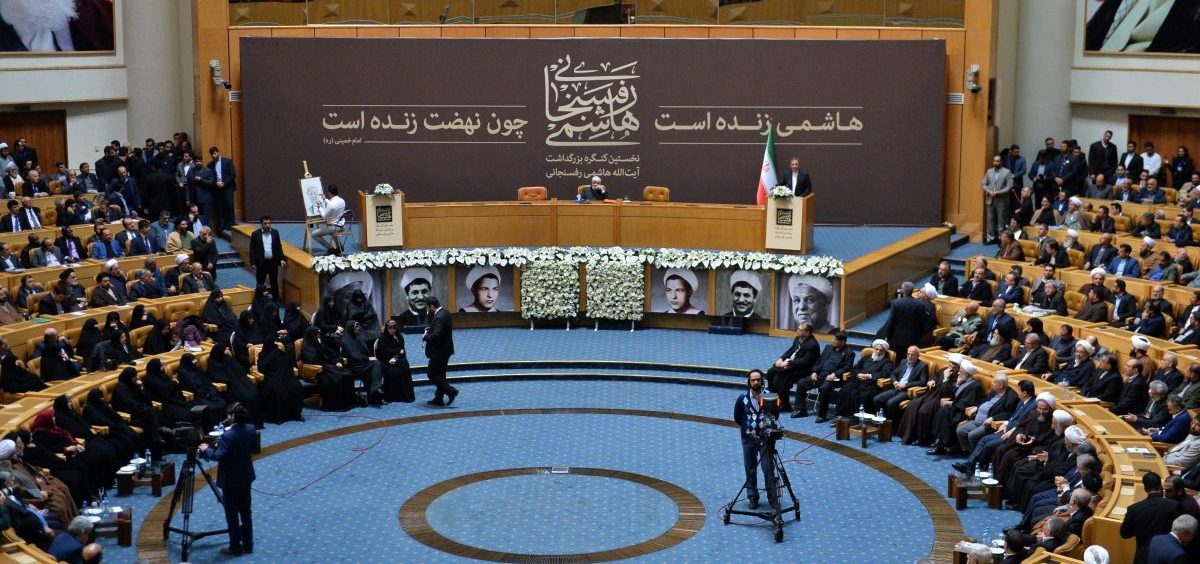News

Trump Again Keeps U.S. In Iran Nuclear Deal — But Threatens To Get Out Later
By: Larry Kaplow | NPR
Posted on:
President Trump has called it the “one of the worst deals” he has ever seen — but for now, he is keeping the U.S. in the nuclear deal with Iran.
The president decided Friday to continue waiving — that is, easing — some economic sanctions against Iran. That is part of the U.S. commitment in the 2015 nuclear deal known as the Joint Comprehensive Plan of Action.
Under the deal, Iran allows strict limits on its nuclear program in return for easing of economic sanctions.
The White House also announced Friday that the administration is placing new, specific sanctions on 14 Iranian people or agencies. This follows previous practice, in which a reluctant president has kept the U.S. in the deal but sought other ways to get tough on Iran.
“This is the last such waiver [the President] will issue,” said a senior administration official briefing reporters, threatening that the administration could still pull out of the deal.
The administration says Trump now intends to make a deal with European allies “fixing significant flaws in the deal” and getting tougher on Iran generally.
In a statement, the president said, “This is a last chance. In the absence of such an agreement, the United States will not again waive sanctions in order to stay in the Iran nuclear deal.”
But the administration said these negotiations with Europe will not include Iran, which seems to run counter to U.N. and European insistence that any changes made in the deal include all parties.
The new terms Trump seeks with the European countries appear similar to actions he asked Congress to take three months ago but that Congress has not acted on.
The new sanctions announced Friday focus on Iranian entities involved in the crackdown on recent protests in Iran. The Treasury Department placed sanctions on the head of the Iranian judiciary and a notorious prison. It also sanctioned agencies that censor or limit access to the Internet.
Trump promised in his campaign that he would scrap or renegotiate the nuclear deal, which the Obama administration negotiated with Iran and five other world powers in 2015.
Waiving the big sanctions and slapping on some new small ones is a maneuver we’ve seen the Trump administration do before, as it deals with its dilemma on the nuclear deal.
Here’s why this keeps coming up: Every few months — the terms vary — the president faces deadlines for deciding whether to continue waiving sanctions that Congress imposed years ago.
Part of the nuclear deal was that the U.S. would waive the sanctions, which are part of the relief Iran gets in exchange for destroying much of its nuclear equipment and allowing inspections.
Some of those deadlines came up this week. The waivers the president issued Friday make it easier for banks around the world to do business with Iran and for Iran to sell oil.
Opponents of the deal note that it doesn’t address Iran’s support for militant groups or its continued missile development and that the country can use the money it gets from sanctions relief to support those destabilizing efforts. They note that since the deal was signed, Iran has continued to hold some Americans and other Westerners in jail.
But proponents of the deal say that it forced Iran to destroy much of its nuclear equipment and allow strict inspections that prevent Iran from developing nuclear weapons. They argue that if the U.S. pulls out, Iran might kick out international nuclear inspectors. Or it could keep its end of the bargain and continue doing business with other countries in the deal — France, Germany, China and Russia — and isolate the U.S.
Three months ago, Trump answered a congressional deadline by refusing to “certify” U.S. participation in the deal.
Trump had certified the deal twice before, and senior officials have grudgingly said Iran is complying. That has put Trump in a tough position, given his opposition to the deal.
The recurring three-month certification deadline was created by Congress as a way to make President Barack Obama continually account for a deal many opposed. But Trump’s refusal to certify the deal to Congress did not pull the U.S. out of the deal itself.
9(MDI4ODU1ODA1MDE0ODA3MTMyMDY2MTJiNQ000))

